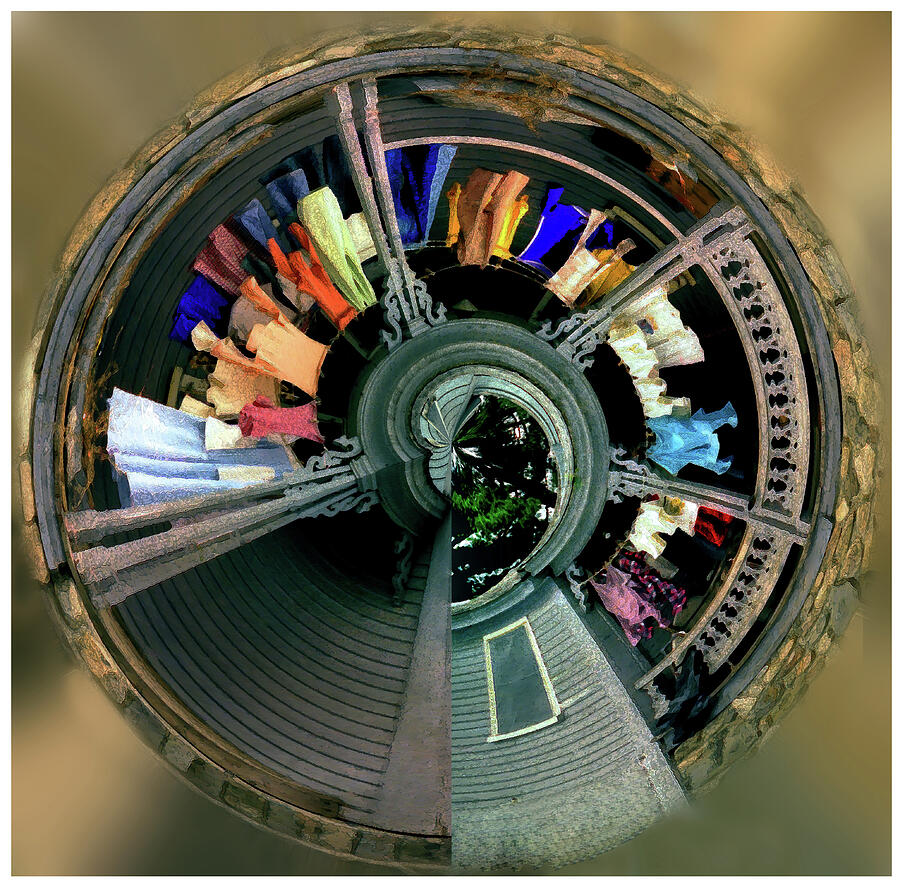 In a quiet neighborhood of Enfield NH - a town already sleepy by nature, the friendly folks at Gemstar Gemstones have created an island of beauty with their unique shop. Over the years when shopping for beads with my wife or just wandering the outer edges of the shop and property, I have found inspiration for many an image.
In a quiet neighborhood of Enfield NH - a town already sleepy by nature, the friendly folks at Gemstar Gemstones have created an island of beauty with their unique shop. Over the years when shopping for beads with my wife or just wandering the outer edges of the shop and property, I have found inspiration for many an image.This blog entry walks you through the process of creating a final image - or as in the case of this one - several variations on the theme. Beginning with this original image taken in the meditation garden on the grounds of Gemstar.
Gemstar Gemstone
427 Shaker Boulevard, Enfield, N.H.
(603) 632-7115
Hours: Wednesday, Thursday and
Friday, 1 to 9 p.m.; Saturday, 12 to
8 p.m.; and Sunday, 12 to 5 p.m
While the original image is interesting, intriguing, curious, it nonetheless lacks something that beckons the viewer deeper into it so the first step I took was to try and enhance the range of definition within the image and make a few things pop. To do that I used a process I have

developed to simulate a high dynamic range (HDR) photo. I do that by using a photo editing software - in this case Photoshop - to create the equivalent of three images shot at three different exposures: 1 correctly exposed, 1 image 2 stops under exposed and one image 2 stops over exposed. These three images are then dragged into an HDR Editing software - there are several choices and I use a $99 program called Photomatix. Photomatix blends the three images and allows you to manipulate the various colors, highlights, shadows, across a broad range of exposure to create a single image that is generally referred to as a "tonemapped " image.
The tonemapped image is then opened up again in Photoshop or whatever editing software you use and corrected as needed for color saturation, range, etc.
At this point what I really have are two unsatisfactory images, yet each w
ith some interesting aspects. Here they are next to one another.
In the original image (lower) I find the shadows to be much more interesting than the bark and red brown litter on the ground. At the same time, I like the way that the big round agate boulders pop in the HDR image. Likewise the small agates are more attractive but may be in need of some color correction.
Everyone has different techniques for blending two images together so rather than go into detaiil on this, I'll simply state that using the two images, and a series of erasures, tweaks to color and saturation and dodging and burning, I blend together the background from the original and the foreground of the HDR image to create a Blended image below.

The Blended image remains true to the original photograph, which - to the purist - is important.
Not being a purist, and furthermore in keeping with the idea of variations on a theme. I then begin to take a look at different ways to alter the original image to achieve some unique end.
I play with the background . . .
Taking the HDR Image and blurring its background to produce this image.

Using photoshop's liquify feature to liquify and manipulate the background of the HDR image to produce the image below.

Using the liquify feature on the blended background as below:

Or here . . .

The replacing the background with something different . . . lupines growing in a line for instance.

Or creating the effect of an agate stream flowing around the boulders as below:

Or by adding another image into the scene as with this young indian pow wow dancer:

You are limited only by your imagination and time.





